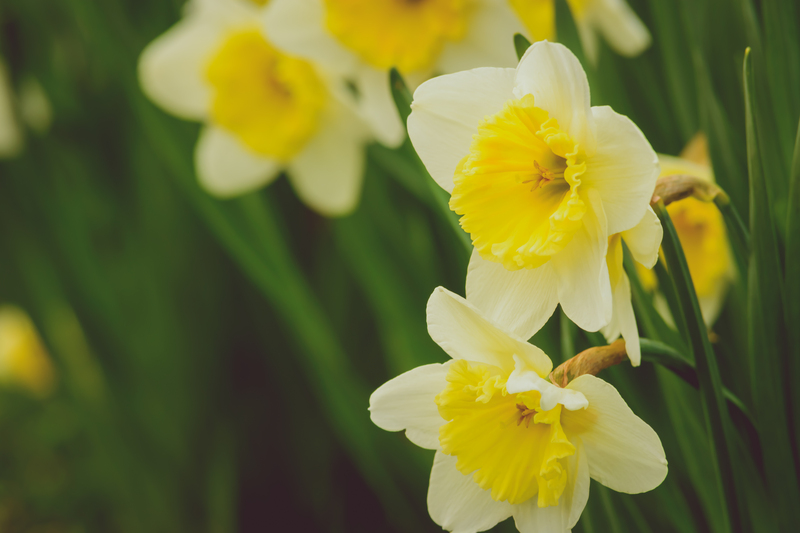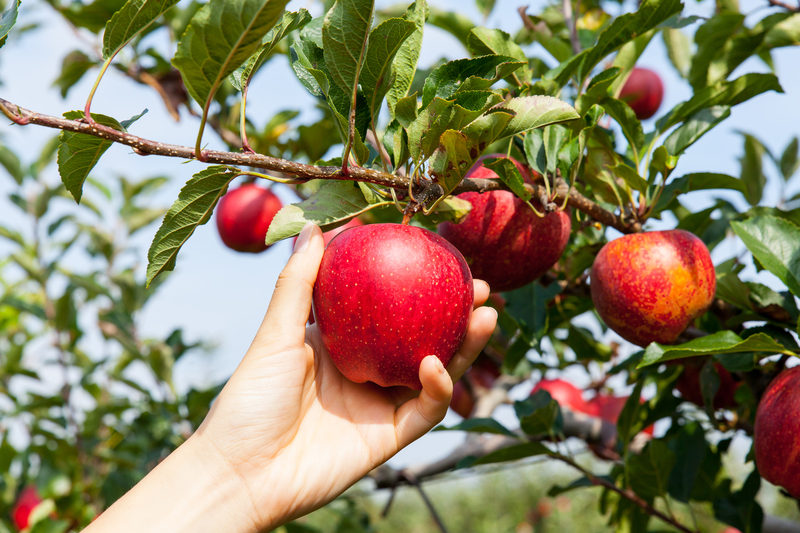The Ultimate Guide to Winterizing Your Garden Plants
As the days get shorter and the air turns crisp, gardeners everywhere begin to think about one crucial task -- winterizing garden plants. Whether you're a seasoned horticulturist or a weekend enthusiast, proper preparation is essential to ensure your beloved plants survive--and even thrive--through the cold winter months.
This comprehensive guide will walk you through everything you need to know about winterizing your garden, from understanding your climate zone and protecting various plant types to detailed, actionable steps for every size and style of garden. Let's dive in!
Why Is Winterizing Essential for Garden Plants?
Cold temperatures, frost, snow, and wind can wreak havoc on plants that aren't properly protected. Winterizing your garden plants is all about minimizing these risks. The key benefits include:
- Prevents winter kill from harsh winds and freezing temperatures.
- Reduces loss from snow and ice accumulation.
- Limits disease and pest problems that can escalate in late winter and early spring.
- Promotes more vigorous growth and blooms when spring arrives.
By giving your plants winter protection, you're safeguarding your investment of time, effort, and money in your garden.

Understanding Your Garden's Needs: Climate and Hardiness Zones
Before you start preparing your garden for the winter, it's vital to understand your local climate. The USDA Plant Hardiness Zone Map--or your country's equivalent--will help you determine which plants need the most winterizing attention.
Assessing Your Zone
- Find your zone using resources such as the USDA website.
- Note which of your plants are hardy, semi-hardy, or tender for your area.
- Remember, microclimates (like spots near walls or under trees) can add or subtract a zone of cold tolerance.
Types of Plants Needing Winter Protection
- Annuals - typically removed at season's end, but some (like pansies) can be overwintered.
- Perennials - most require some level of mulch or cover.
- Bulbs and Tubers - may need digging and storing indoors.
- Shrubs and Trees - especially newly planted or borderline hardy species.
- Container Plants - roots are especially vulnerable in above-ground pots.
- Vegetables - certain cold-hardy crops can be extended with row covers or cold frames.
Step-by-Step Guide to Winterizing Your Garden Plants
1. Clean Up Your Garden Beds
- Remove dead or diseased plant material to reduce overwintering pests and diseases.
- Cut back perennials, leaving about 2-4 inches of stem for some species (grasses and plants with interesting seed heads can be left for wildlife and winter interest).
- Collect and dispose of fallen fruit, leaves, and debris.
2. Mulching: Your Garden's Winter Blanket
Mulch is one of the most effective methods for winter plant protection. Mulching insulates the soil, reduces freeze-thaw cycles, and helps retain moisture.
- Apply 2-4 inches of organic mulch (shredded leaves, straw, bark) around perennials, trees, and shrubs.
- Keep mulch a few inches away from trunks and plant crowns to prevent rot.
- For bulbs, cover beds with a layer of mulch after the first frost but before ground freezes.
Tip: Pine boughs or evergreen branches can be layered over delicate plants for extra protection.
3. Water Well Before Winter
A common mistake is letting plants dry out before the ground freezes. Give your garden a deep watering in late autumn, especially if fall has been dry. Well-hydrated roots are better equipped to withstand freezing temperatures and winter winds.
4. Protecting Perennials and Flower Beds
- After cutting back, mulch beds thoroughly.
- Consider cloche covers for marginally hardy perennials or young plants.
- Mark locations of dormant perennials with stakes.
- Don't forget to divide and transplant crowded beds in the fall--plants will be better established by spring!
5. Safeguarding Shrubs and Trees
- Wrap young or vulnerable trees with tree wrap or burlap to prevent sunscald and rodent damage.
- Tie branches together with soft twine to protect from heavy snow loads.
- Use stakes and mesh to create barriers against deer and rabbits.
- Mulch around the base but not against bark.
6. Container and Potted Plant Protection
- Move pots into a sheltered spot, such as against a wall or inside an unheated garage or shed.
- Elevate pots off the cold ground with pot feet or bricks to improve drainage and reduce freezing risk.
- Wrap containers with bubble wrap, burlap, or straw for added insulation.
7. Overwintering Tender Bulbs and Tubers
- Dig up non-hardy bulbs (dahlias, gladiolus, begonias) after the first frost turns foliage yellow.
- Allow bulbs to dry; store in a cool, dark place in peat moss or sawdust over winter.
8. Vegetable Garden Winterization
- Harvest remaining warm-season crops.
- Pull dead plants and compost disease-free debris.
- For cold-hardy vegetables (kale, carrots, parsnips), protect rows with fabric, plastic tunnels, or cold frames.
- Apply mulch to empty beds to boost soil health for spring planting.
9. Lawn and Groundcover Protection
- Keep mowing lawns until grass stops growing.
- Rake leaves to prevent suffocation and disease.
- Apply a thin layer of compost for added nourishment over winter.
Special Winterizing Strategies for Various Garden Types
Winterizing Raised Beds
- Cover with mulch or floating row covers to stabilize soil temperature.
- Plant cover crops like clover or rye to prevent erosion and add nutrients.
Protecting Native and Ornamental Grasses
- Leave most grasses standing for winter interest and wildlife habitat.
- In early spring, cut back old foliage to make way for new growth.
Sustaining Pollinator Habitats
- Allow some seed heads and stems to remain for birds and overwintering beneficial insects.
- Avoid unnecessary cleanup of all plant debris--nature's mulch supports a healthy garden ecosystem.
Winterizing Roses
- After the first frost, mound soil or mulch around the base of hybrid teas and other tender types.
- Prune only lightly in the fall; heavy pruning can wait until spring.
- In severe climates, cover with rose cones, burlap, or a thick mulch.
Common Mistakes When Preparing Plants for Winter
- Neglecting watering before the ground freezes.
- Applying mulch before a hard freeze, which can harbor pests and diseases. Wait until after the first frost.
- Piling mulch against the trunks or crowns, which can promote rot.
- Pruning shrubs and trees late in fall--this can encourage tender new growth that's easily killed by frost.
- Forgetting to label beds where perennials die back completely.
- Leaving containers unprotected and prone to root freeze.
Bonus Tips for Successful Plant Winterization
- Take notes each year on what worked and what didn't to refine your strategy.
- Inspect plants periodically through winter, especially after storms.
- Plan for early spring care as the snow melts--ease off mulch gradually as temperatures warm up.
- Invest in quality mulching materials --well-composted bark, leaf mold, or clean straw is best.

FAQs on Winterizing Your Garden Plants
When should I start winterizing my garden?
Begin winterizing your garden plants when daytime temperatures regularly drop below 50?F (10?C), and complete all tasks before the ground is frozen solid. Mulching should typically be done after the first light frost but before heavy freezes set in.
Can all plants survive winter outdoors?
No--plants tender to your region's climate will need extra protection or should be moved indoors. Refer to their hardiness zones for guidance.
Is it okay to cut back all perennials in the fall?
Not always! Some perennials--especially ornamental grasses and those with seed heads--are best left until spring for winter interest and wildlife value. Cut back those most prone to rot or pest problems.
What's the best mulch for winterizing plants?
Shredded leaves, clean straw, pine needles, and wood chips are popular choices. Avoid materials that mat down or contain weed seeds.
How do I protect my garden from winter storms?
Stake and tie vulnerable plants, use windbreaks like burlap screens, and remove snow from branches gently to prevent breakage.
Summary: Ensuring a Flourishing Garden in Spring
Successfully winterizing your garden plants is crucial to maintaining a healthy, vibrant landscape year after year. With the right preparation, you'll minimize losses, encourage lush spring growth, and enjoy a landscape that weathers the cold with resilience.
Use this ultimate guide as a checklist for winter garden protection, and embrace winter as a valuable time to nurture your outdoor space for the seasons ahead.
Key Takeaways
- Know your climate and your plants' hardiness.
- Mulch, water, and clean up beds thoroughly.
- Protect vulnerable trees, shrubs, and containers from harsh conditions.
- Customize winterizing care for each plant type and garden feature.
With this knowledge, you're ready to face the cold and keep your garden thriving all winter--and flourishing in the spring!